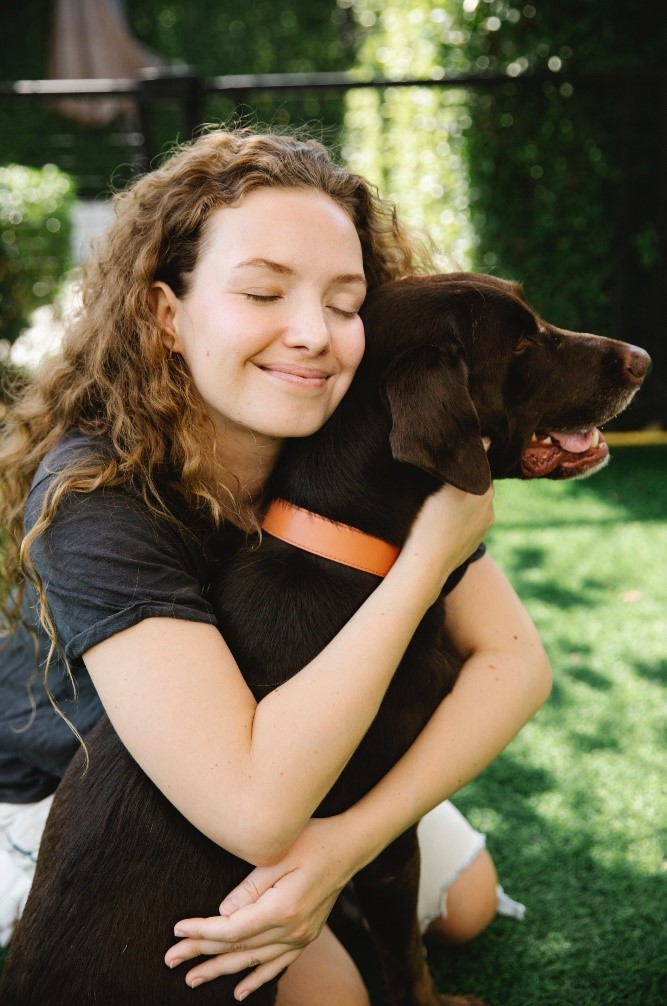I. WHAT´S THE BASIC PATTERN FOR THE PRESENT PERFECT?
Here are the basic patterns for affirmative and negative sentences, as well as questions.


II. WHEN DO WE USE THE PRESENT PERFECT?

2.1 It has many uses. Let´s begin with this. To talk about the result of actions that happened at some indefinite time in the past. It is not important when the actions took place, but the results in the present are important. Here are some examples:
- I have cleaned my room. _(Long form: I have)
- I´ve cleaned my room. _(Contracted form:_ I´ve)
- Avy has gotten a job in Japan. (Long form: Avy has)
- Avy’ s gotten a job in Canada. (Contracted form_ Avy´s)
- My parents have been to Cancún three times.
- I’ve seen that movie before.
- Richard´s called up three or four times today.
- Tessa’s bought a new car! It´s awesome!
- Oh my! I´ve lost my wallet!

2.2. We use the signal words “SINCE” (point of time / date) or “FOR” (period of time/ duration) at the end of the sentence to refer to actions that began in the past and are still continuing. For instance:
- We have lived in Canada since 2010.
- We´ve worked there for many years.
- How long have you studied at UNAM?
- I´ve studied there since last year, but my brother´s studied at UNAM for 4 years.
- We´ve been at the doctor´s office since 9 A.M..
- Jane and Ralph have been married since 2010.
- We´ve been friends for more than 10 years.
- I haven´t heard from Kevin since we graduated, but I´ve seen his brother a lot in town for the last month. David hasn´t talked to me at all since last year.
- David hasn´t talked to me at all since last year.

2.3 KEY POINTS TO KEEP IN MIND
'FOR' is used for general periods of time. It’s to express duration. For example:
- For a couple of hours
- For three days
- For a week
- For two months
- For several years
- For such a long time now
- For two centuries
'SINCE' is used for a starting point, a specific time. For instance:
- Since last Monday
- Since last month
- Since 1997
- Since February 14, 2015.
- Since I was born.
- Since last Christmas.
- Since the day we met.
- Since the day they broke up
III. OTHER USES OF THE PRESENT PERFECTY

3.1 We use the signal words “EVER” or “NOT EVER /NEVER” between auxiliary HAVE/HAS and PAST PARTICIPLE, to refer to life experiences. EVER means “at any time” and NOT EVER/NEVER means “at no time”. For instance:
- A: Have you ever worked for a multinational company?
B: No, I haven´t ever worked for one. = I have never worked for one.
- A: Have you ever participated in a karaoke contest?
B: No, I haven´t ever participated in one. I don´t like singing.

- A: Have you ever felt so stressed that you feel like crying?
B: Yes, I have, but I have never cried, as far as I remember.
- A: Have you ever been told you´re a difficult person to work with?
B: No, nobody has ever said anything like that to me!
- Have your parents ever scolded you in front of other people?
No, never. They’ve always been very supportive to me.
- Have you and you family ever been involved in a theft ?
No, nothing like that has ever happened to us. Thank God
3.2 We use the signal words “LATELY” or “RECENTLY” “UP TO NOW” or “SO FAR” at the end of affirmative or negative sentences or questions, to refer to actions that have (or haven´t) occurred some short time ago. For instance:

A: Have you traveled to Europe so far?
B: No I haven´t. I last went 3 years ago.
A: Have you seen Allyson lately?
B: No, I haven’t. Actually I saw her at the FST Convention 2 years ago.
Nobody has registered for the swimming competition lately. We´ve only received 10 registrations up to now.
My friends and I haven´t done anything in relation to our school project so far. I´m getting kind of worried.
IN SHORT, WHAT ARE THE SIGNAL WORDS FOR THE PRESENT PERFECT?

IV. CONSOLIDATION.
NOW TRY THE FOLLOWING QUIZ. Choose the correct answer to complete the following sentences correctly
V. EXERCISE I
Choose a or b to complete the following sentences correctly.
VI. READING COMPREHENSION AND VOCABULARY BUILDING
FOSTERING A GREYHOUND OVER LOCKDOWN HAS REMINDED ME TO ENJOY THE SMALL THINGS IN LIFE

(I) We were entering week 14 of lockdown due to the coronavirus pandemic, and much like a lot of other people, I was fed up. I was struggling to find motivation to do just about anything and trying to figure out what my new routine looked like for this extended period. I was and still am extremely grateful to still have a job and grateful that my family and friends were safe and healthy. However, I was eager to welcome something else into my life besides working, eating, and sleeping — all within the same four walls.
(II) A couple of months prior, I'd contacted a few local dog centers that I knew were looking for urgent foster homes to help kennels cope with the demand and lack of staff. I figured I had time to dedicate to a pooch who needed it. One random Tuesday, weeks and weeks after getting in touch, I got a call from a rescue center saying that they'd found a foster match — a beautiful but extremely nervous brindle greyhound named Wendy, whose name holds special meaning to my family. Four days later, my boyfriend and I went to pick her up. Little did I know that over the next couple of weeks, this large, deer-like athlete would help me as much as I'd help her.
(III) As a retired racing greyhound, Wendy had never lived in a home before and was very timid. The TV scared her, the front door scared her, the hard wooden floor scared her, and even the sound of tin foil scared her. She needed love, routine, and a whole lot of patience to get to a place where she could be adopted into her forever home.
(IV) Tails.com reports that over 99.7 percent of UK owners say their dog improves their mental well-being, and it's not hard to see why. She has given me a reason to wake up in the morning (although 5 a.m. was a little harsh — thanks, kennel clock). She has made my very normal and now very mundane lockdown walk brighter again. She has made me feel less lonely. According to Tails.com, two-thirds of people would describe their dog as a "four-legged therapist", and I couldn't agree more. I have adored having the sweet little (big, she was very big) ray of sunshine lazing around the house, chatting to her, and watching her explore many small joys in the world for the first time. Her biggest joy? Sleeping with as many shoes as possible.
(V) But fostering isn't for everyone. Tails.com head vet Sean McCormack has told POPSUGAR that, "fostering or adopting a dog in lockdown could be a great option for many people"; however, fostering often costs money for starters, which is a commitment in itself, and it requires a lot of patience and training. Dogs coming in to be fostered oftentimes have behavioral issues that need to be addressed, and it likely won't be a quick fix. For this reason, McCormack notes that others may rush into fostering animals without giving it enough thought. "We're already seeing some rescue centers saying lockdown dogs and puppies are now being abandoned," he added.
(VI) Wendy is now happy in her new home, and although she still has a long way to go with her nervousness, she is a transformed dog — and she has transformed my life in lockdown. I am forever grateful that Wendy has come into my life to teach me patience, unconditional love, and learning to let go when it was time for her move into her forever home. Wendy has reminded me to enjoy the little things in life and the joy that comes from watching others enjoy the small things in life, too.
PRACTICE I.
For each question or statement, mark the correct letter a, b or c
BIBLIOGRAPHY
Azar, B. S., Azar, D.A., & Koch R.S. (2009). Understanding and Using English Grammar. Longman.
Barker C. and Mitchell, L. (2004). Mega 1 (First Ed.). Macmillan Publishers.
Hewings, M. (2013) Advanced Grammar in Use with Answers: A Self-Study Reference and Practice Book for Advanced Learners of English. CUP
Murray, L. (2014) English Grammar. Cambridge University Press.
WEB RESOURCES
Images 1 through 6 _ Personal subscription to Pixton.
REFERENCES
Chart 1 through 3_ Own source . Images_Free stock photos_https://www.freepik.com/free-vector/smiling-boys-girls-pointing-banners-blank-empty-posters-sheets-paper-with-copy-space-set_22655987.htm#query=cute%20characters&position=40&from_view=keyword
CREDITS
- (2021) Practice exercise written by Connie Reyes_Language Department at ENES-LEON UNAM
- Audio version performed by Sally and Matthew_Voicemker_Text to Speech Converter_Connie Reyes 2022 Subscription
- (2021) Practice exercise written by Connie Reyes_Language Department at ENES-LEON UNAM
- Story by Tori Crowther. Published on October 9, 2020. Text retrieved from
-
https://web.archive.org/web/20201023020351/https://www.popsugar.co.uk/pets/fostering-dog-during-coronavirus-pandemic-essay-47864029
- (2021) Practice exercise written by Connie Reyes-Cruz_Language Department at ENES-LEON UNAM
- Audio version performed by Sally/Matthew _Voicemker_Text to Speech Converter_Connie Reyes 2022 Subscription
- Free stock photos_https://www.pexels.com/es-es/foto/amor-mujer-animal-perro-7210691 _ Photo by Blue Bird in Pexels